Winter is finally here, and as an off-road enthusiast, I can’t wait to take my ATV on snowy adventures.
If you’re also looking forward to experiencing the thrill of riding ATVs in snow, you’re in the right place. In this article, we’ll be discussing tips to ensure you have a safe and exciting ride in wintry conditions.
One of the most important aspects of riding ATVs in snow is understanding the challenges and differences between riding in snow and on other terrains. A proper understanding of your ATV and the techniques to conquer snowy terrains is essential.

Moreover, preparation is key – from your winter gear to your ATV’s maintenance, everything needs to be taken care of to ensure a smooth ride.
By following safety measures, adapting your riding techniques, and maintaining your ATV in winter conditions, you can enjoy off-roading in the snow like never before.
With the right approach and proper precautions, winter riding can be an unforgettable experience.
Key Takeaways
- Equip yourself with proper winter gear and ensure your ATV is well-maintained
- Learn to adapt riding techniques for snowy terrains and follow safety measures
- Use your ATV for multiple winter activities like plowing and competitive sports
Understanding ATVs in Snow
Key Features for Snow Riding
When I ride my ATV or UTV in the snow, I always make sure it’s well-equipped for winter conditions. Some of the essential features include:
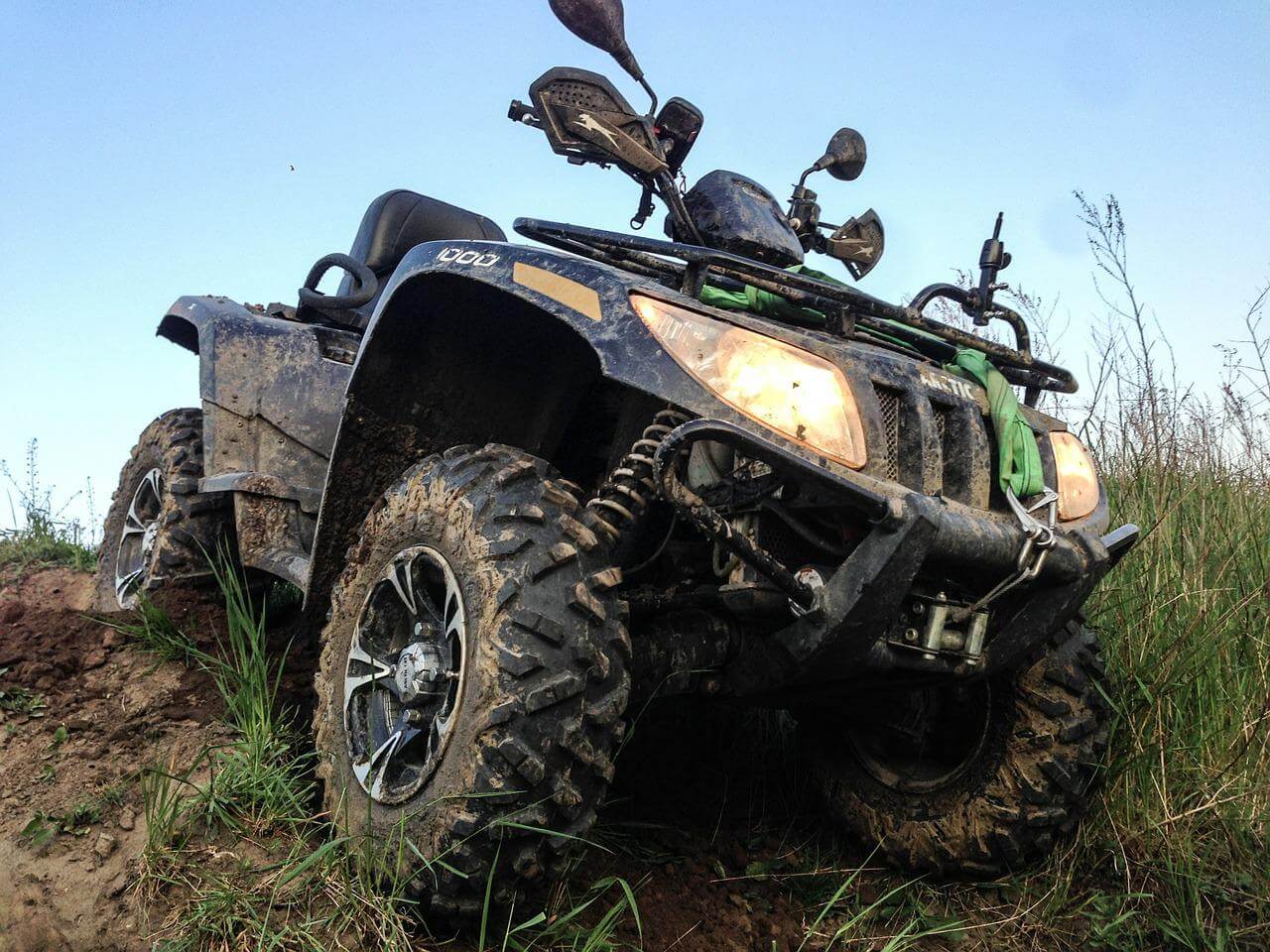
- Tires suited for snow: Choose tires with deep lugs and aggressive patterns to provide extra traction on slippery surfaces.
- Winch: A winch can help pull your vehicle out of a snowbank or assist in other recovery situations.
- Hand warmers: Believe me, heated handgrips make a significant difference in cold weather.
- Windshield: Adding a windshield can protect you from wind, snow, and cold air.
Comparing ATV and UTV
When deciding whether an ATV or UTV suits my needs for snow riding, I consider the following:
| ATV | UTV | |
|---|---|---|
| Seating | 1-2 riders | 2-6 passengers |
| Protection | Limited | Enclosed cab options are available |
| Storage | Minimal | Larger cargo space |
| Performance | Agile and sporty | More stable, suited for work |
While both vehicles can handle off-roading activities, ATVs are more nimble and suitable for speedier recreation. On the other hand, UTVs offer more space and protection, which is great if I need to work or transport extra gear.
SXS: An Alternative for Winter Fun
Side-by-side (SxS) vehicles are another fun way to enjoy the thrill of off-roading in the snow. They’re similar to UTVs but provide a balanced mix of performance and utility.
Some benefits of SxS vehicles are:

- Exhilarating performance: With powerful engines and sporty handling, SxS vehicles bring serious excitement to winter trails.
- Comfortable seating: SxS vehicles often offer plush seats and convenient cup holders, making them great for all-day rides.
- Customization: There are countless accessories available to modify and upgrade your SxS experience.
Whether I’m cruising through snowy forests or tackling icy hills, ATVs, UTVs, and side-by-side vehicles all deliver exceptional winter off-roading experiences.
Preparation for Winter Ride
As a fan of ATVs and UTVs, I know that riding in the snow can be a thrilling experience, but it’s essential to take certain precautions.
In this section, I’ll discuss some tips for choosing the right gear, necessary accessories, and waterproofing to ensure a safe and exciting ride.
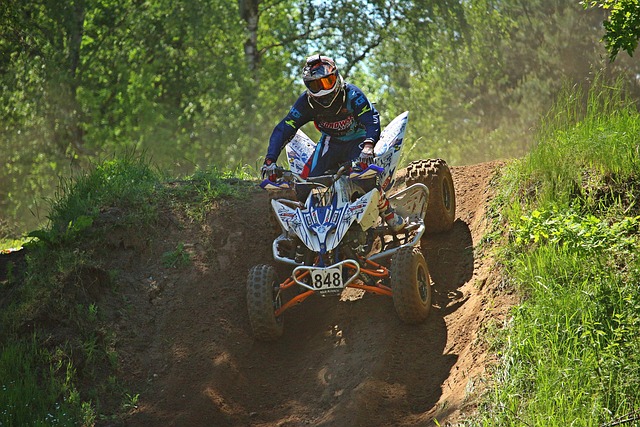
Choosing the Right Gear
What I always prioritize when preparing for a winter ride is appropriate clothing. It’s important to stay warm and dry during those cold winter months.
I recommend wearing the following:
- A quality snowmobile suit: This will keep me warm, dry, and protected from the elements.
- Insulated gloves: Cold hands can make it tough to control my ATV, so I always wear insulated gloves.
- Winter boots: I look for boots with a good grip and insulation and are waterproof to keep my feet warm and dry.
Necessary ATV and UTV Accessories
There are some additional accessories that I find indispensable for winter riding:
- Cab heater: A cab heater is a must for me to keep warm on my UTV. It helps in maintaining a comfortable temperature inside the enclosed cab throughout the ride.
- Traction devices: I use snow tires and/or chains to provide better traction in snowy conditions.
- Winch and rope: These are essential for pulling my ATV out of the snow if it gets stuck. A strong rope and a reliable winch come in handy in such scenarios.
- First aid kit: Accidents can happen, so I carry a first aid kit to handle any minor injuries during the ride.
Waterproofing Your Ride
To ensure a smooth and comfortable ride, I always take time to waterproof my ATV or UTV.
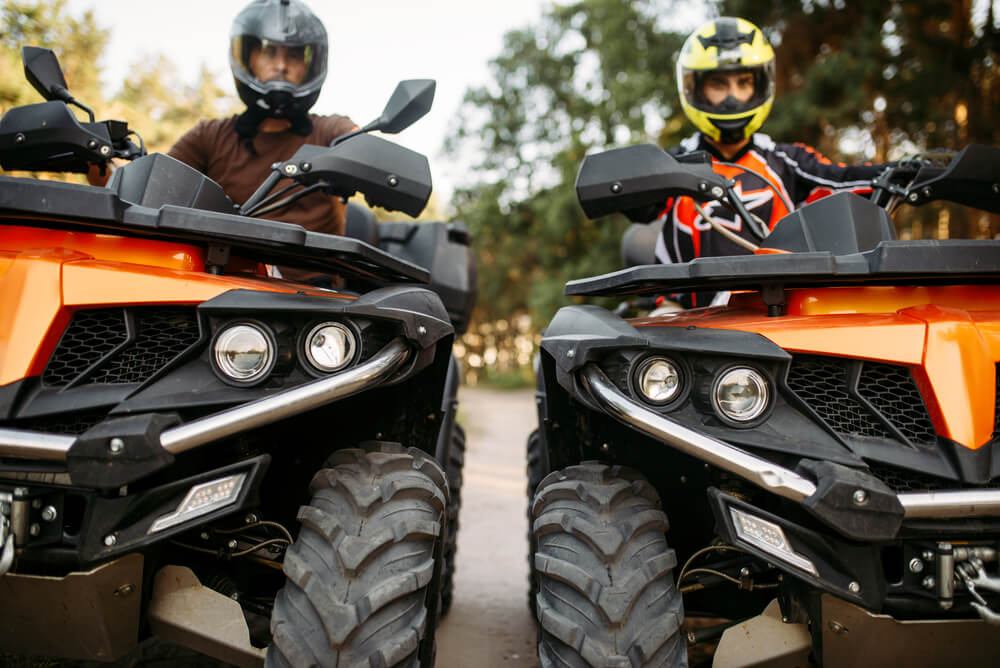
Some steps I follow include:
- Sealed electrical connections: Before winter arrives, I check and seal all electrical connections to prevent moisture and ice from causing any damage.
- Grease fittings: I ensure that all grease fittings are well-lubricated to prevent rust and corrosion caused by moisture.
- Tire pressure: During winter months, I keep an eye on my tire pressure due to the colder temperature fluctuations.
By following these preparation tips, I am ready to tackle snow-filled adventures on my ATV or UTV while staying safe and warm.
Safety Measures in Snow
Steering and Throttle Control
When riding my ATV in the snow, I always pay close attention to steering and throttle control. Being cautious with my movements and ensuring smooth acceleration helps me maintain better traction on slippery surfaces.
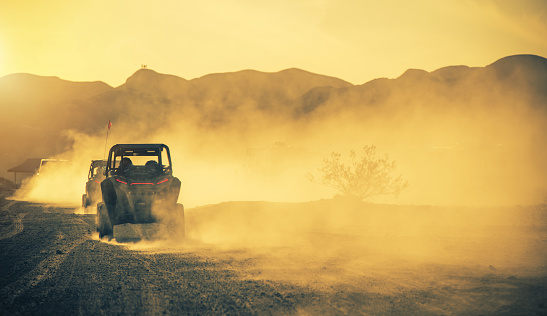
To improve traction even further, I often invest in snow-specific tires or even consider adding tracks to my ATV.
It’s also crucial for me to have a winch installed on my ATV in case I get stuck in deep snow or have an accident. A winch helps me easily pull my ATV out of tough spots, which reduces the risk of injury and ensures a more enjoyable ride.
Understanding Weight Distribution
I find it essential to understand how weight distribution affects my ATV when I’m riding in snow. To maintain stability and avoid accidents, I make sure to shift my weight according to the terrain and vehicle’s movement.

For instance, when riding uphill, I lean forward to put more weight on the front tires, increasing traction and steering control.
Also, I make sure to check the condition of my tires regularly, as worn-out or underinflated tires can lead to poor weight distribution and an increased risk of accidents.
Riding Techniques on Snowy Terrain
Handling Packed Snow
When I ride on packed snow, I find it important to maintain a steady pace and remain cautious of changing conditions. Packed snow can still be slippery, so I pay extra attention to my ATV’s traction.

Lowering the tire pressure slightly can help with traction. Further, I make sure to lean into turns with my body, as this helps me maintain better control and navigate turns more smoothly.
Managing in Deep Snow
Navigating deep snow can be challenging, but it’s possible with the right approach. First, I always ensure that my ATV is equipped for snowy conditions, including having the correct tires and potentially using tire chains.
I use a light touch on the throttle to prevent bogging down and gently rock the ATV back and forth if it gets stuck. I also try my best to stay on designated trails, as it’s much easier to ride through deep snow when following a compacted path.

Using Momentum Wisely
Momentum plays a crucial role in riding ATVs on snowy terrain. I find it essential to maintain a steady pace, especially when going uphill. If I slow down too much or come to a full stop, it can be tough to regain momentum, and I might get stuck.
Consequently, I avoid abrupt acceleration or deceleration when traversing snowy landscapes. Instead, I aim for a gentle, controlled throttle and rely on my body movements to help shift weight and maintain momentum where needed.
ATVs and UTVs Maintenance in Winter
Checking and Replacing Fluids
During winter, I always make sure to check the fluids in my ATV or UTV. Cold temperatures can cause fluids to thicken, making it harder for my vehicle to operate smoothly. I regularly inspect the oil, coolant, and brake fluid levels.
I also check for any leaks, as these could create significant problems if not addressed. For best results, I replace fluids according to the manufacturer’s recommendations.
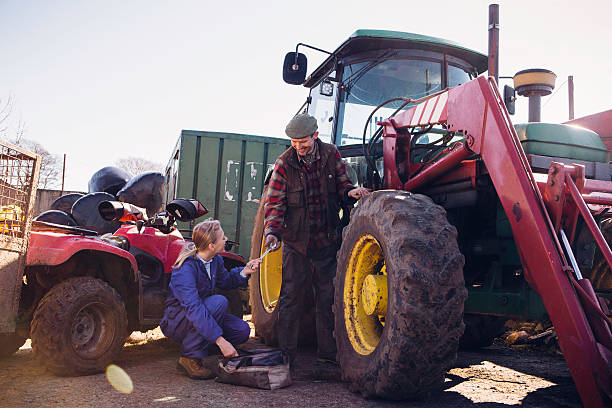
Cleaning After Rides
I find it essential to clean my ATV or UTV after each ride in the snow. This helps prevent any damage from the accumulation of ice, slush, or mud. I usually use a hose or pressure washer to rinse off any debris.
I make sure to give special attention to the undercarriage and wheel wells, as dirt and salt can build up in these areas.
After washing and drying, I use clean rags or an air compressor to remove any remaining moisture. It’s important to allow the vehicle to dry thoroughly to avoid rust and corrosion.
Finally, I apply a thin coat of silicone spray to any exposed metal parts, as this helps protect them from the harsh winter elements.
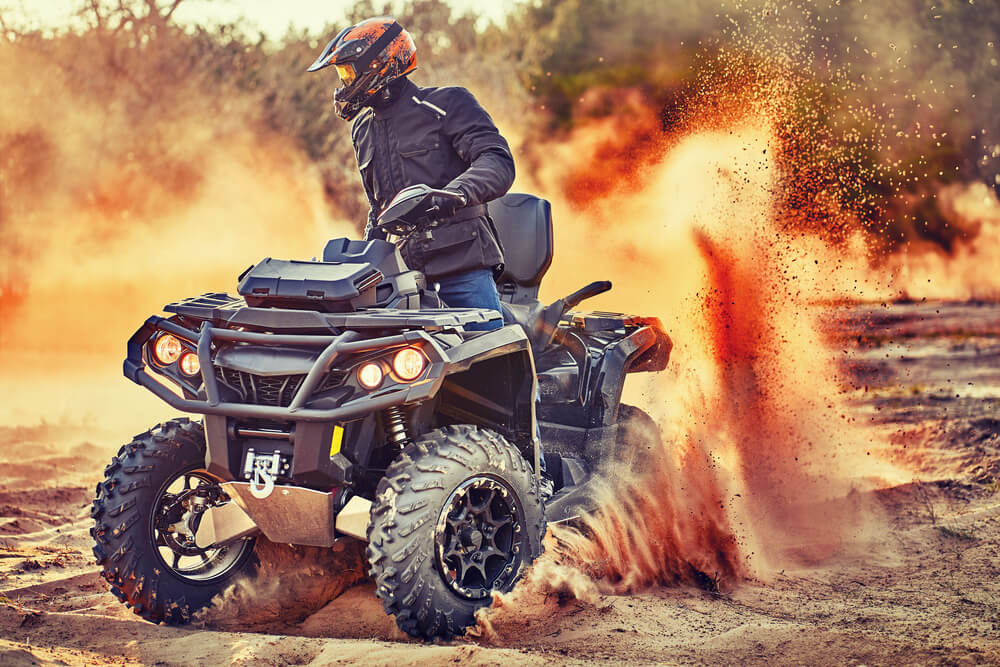
Proper Storage Practices
To keep my ATV or UTV in good condition during winter, I follow a few proper storage practices. First, I store my vehicle in a dry and temperature-controlled environment, like a garage or shed.
This protects it from cold and damp conditions, which can cause rust and other damage.
Here are some storage tips I follow to keep my ATV or UTV in great shape:
- Cover: I always cover my vehicle with a breathable material to protect it from dust and other debris.
- Fuel stabilizer: I add fuel stabilizer to the gas tank and run the engine for a few minutes to circulate the solution. This helps prevent the fuel from deteriorating during storage.
- Battery maintenance: I disconnect the battery and store it in a cool, dry place. I also use a battery maintainer to keep it charged.
- Tires: I place my ATV or UTV on tire stands or blocks to reduce stress on the tires and suspension.
By following these maintenance tips, I can ensure that my ATV or UTV stays in excellent condition throughout the winter, allowing me to enjoy safe and exciting rides in the snow.
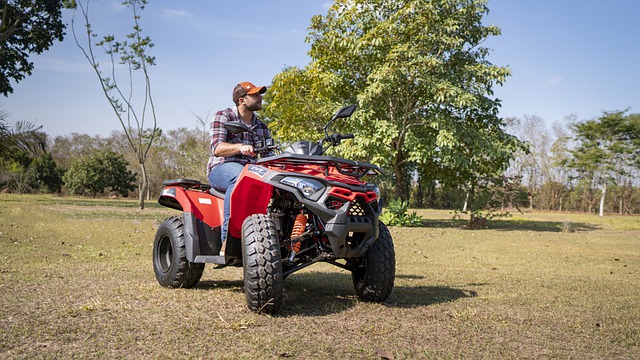
Using Your ATV for Plowing
Choosing Your Plow System
When I decided to use my ATV for plowing, the first thing I needed to do was choose the right plow system.
There are a few factors to consider when selecting the best option for my needs:
- Size: Make sure the plow is the appropriate width for my ATV and the area I’ll be clearing.
- Material: Plows can be made of steel, aluminum, or polyurethane. Each has its benefits and drawbacks, so it’s important to choose the one that suits my needs best.
- Mounting method: Some plow systems attach directly to the ATV, while others require a separate mounting system. I had to ensure that the plow system I chose was compatible with my ATV.
After considering these factors, I was able to choose a plow system that would work effectively for my driveway and ATV.
Snow Plowing Techniques
Once the plow system was installed, I needed to learn some snow-plowing techniques to clear my driveway safely and efficiently.

Here are a few tips that I found helpful:
- Plan the snow removal route: Before starting, I made sure to plan my route carefully, considering factors like obstacles, direction of snow discharge, and end points for snow piles.
- Plow with the storm: I found it helpful to start plowing when the snowfall begins rather than waiting for it to accumulate. It makes the job easier and prevents my driveway from becoming overwhelmed by heavy snow.
- Push, don’t lift: It’s important to push the snow rather than lifting it with the plow. Lifting can cause strain on the ATV and lead to unnecessary damage.
- Don’t speed through the job: I took my time plowing the snow, as rushing could cause me to miss areas or make mistakes that could lead to accidents or property damage.
By following these tips, I was able to use my ATV to plow my driveway safely and effectively throughout the winter season.
Enjoying Off-Road Sports in Winter
Traveling Snowmobile Trails
As a sportsman, I personally love taking my ATV out on snowmobile trails during the winter months. By adding winter accessories like heated grips and a windshield, I’ve found that it’s easier to enjoy the great outdoors in colder conditions.
The key to having fun on these trails is ensuring that my ATV is properly equipped with snow tires for extra traction and appropriate safety gear for the icy conditions.

Exploring Forest Trails
I also find that exploring forest trails covered in snow offers an amazing experience many outdoors enthusiasts don’t get to enjoy often. The snow transforms these trails into a serene winter wonderland that’s perfect for off-roading.
One thing I make sure to do is to adjust my tire pressure for better traction on the snow, and I always pack extra warm clothing and equipment in case I need them.
ATVs and UTVs in Winter Sports
Winter sports don’t always have to be limited to skiing or snowboarding. In fact, using ATVs and UTVs to participate in these activities adds an extra level of excitement and adventure.
I have found that some areas even offer holiday-themed events that combine winter sports and off-roading, allowing people like myself to embrace the full experience and have an exhilarating time in the snow.

Frequently Asked Questions
What are the top safety tips for riding an ATV in snow?
In my experience, the following safety tips are important for riding an ATV in snow:
- Wear appropriate cold-weather gear like helmets, goggles, gloves, and boots to keep you warm and protected.
- Check your tire pressure, as lower temperatures can cause it to drop.
- Never ride alone; always have a buddy or communicate your plan to someone.
- Stay on designated trails and avoid riding on frozen bodies of water.
- Use caution when approaching curves, knowing that snow can decrease your visibility and traction.
How can I improve my ATV’s performance in snowy conditions?
To enhance your ATV’s performance in snow, consider these suggestions:
- Use winter or all-terrain tires with good tread for better traction.
- Install electronic or heated grips to keep your hands warm.
- Regularly check and adjust your suspension, as snow can add extra weight.
- Make sure the battery is properly maintained and fully charged.
Which snow-specific accessories are best for ATVs?
Some popular snow-specific accessories for ATVs include:
- Snow plows to clear paths and driveways.
- Snow chains to improve traction.
- Windshields and handguards for protection against cold winds and flying snow.
- Heated grips and seat covers for added comfort.
Can you recommend a side-by-side UTV for snow?
One side-by-side UTV that I would recommend for snow is the Polaris Ranger XP 1000 NorthStar Edition. It has a fully enclosed cab with heating, and the powerful engine can handle snowy terrain.
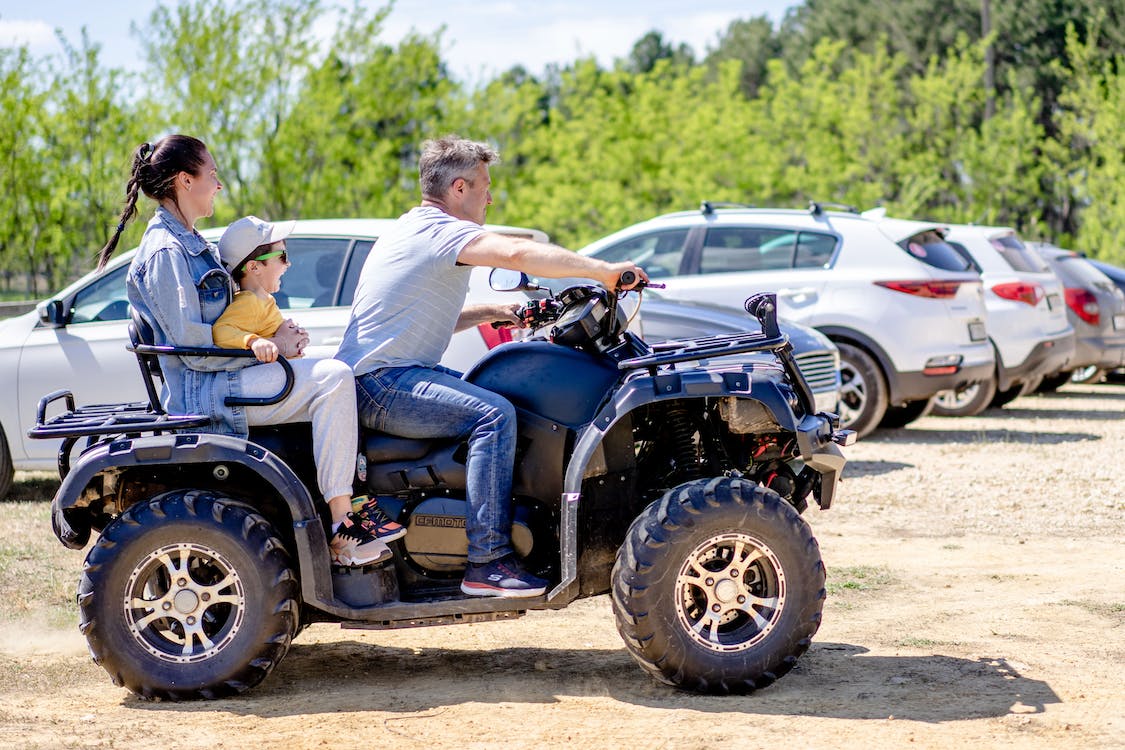
Other popular options include the Can-Am Defender and the Yamaha Viking EPS SE.
What precautions should be taken to avoid accidents on snow-covered trails?
To reduce the risk of accidents on snow-covered trails, keep in mind the following:
- Slow down and maintain a safe distance from other riders.
- Avoid sudden movements, as they can cause loss of control.
- Be extra cautious on hills and slopes.
- Keep an eye out for obstacles buried beneath the snow, like rocks and fallen branches.
How do ATV snow track systems work, and are they worth it?
ATV snow track systems work by replacing the tires with specially designed tracks, allowing for better traction and flotation in snow. They distribute the ATV’s weight evenly, reducing the chance of sinking or getting stuck.
In my opinion, if you live in an area with heavy snowfall and plan to use your ATV frequently in such conditions, investing in a snow track system can be worthwhile.
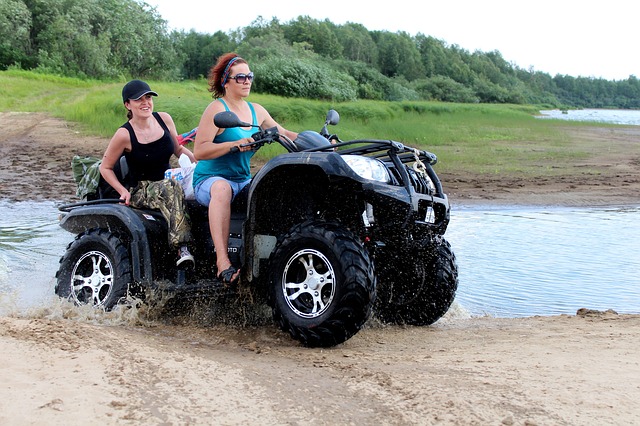
Nonetheless, keep in mind that they can be costly and may require additional maintenance.














